7 Days 6 Nights
Daily Tour
21 people
___
| Triple Sharing (Shimla to Shimla)-Jimny | ||
|---|---|---|
| ADULT | CHILD | INFANT |
| ₹27,499.00 | ₹0.00 | ₹0.00 |
| Triple Sharing(Delhi to Delhi)-Jimny | ||
| ADULT | CHILD | INFANT |
| ₹30,999.00 | ₹0.00 | ₹0.00 |
| Double Sharing(Shimla to Shimla)-Jimny | ||
| ADULT | CHILD | INFANT |
| ₹34,499.00 | ₹0.00 | ₹0.00 |
| Double Sharing(Delhi to Delhi)-Jimny | ||
| ADULT | CHILD | INFANT |
| ₹36,999.00 | ₹0.00 | ₹0.00 |
| Triple Sharing(Shimla to Shimla)-Isuzu | ||
| ADULT | CHILD | INFANT |
| ₹36,999.00 | ₹0.00 | ₹0.00 |
| Triple Sharing(Delhi to Delhi)-Isuzu | ||
| ADULT | CHILD | INFANT |
| ₹39,999.00 | ₹0.00 | ₹0.00 |
| Double Sharing(Delhi to Delhi)-Isuzu | ||
| ADULT | CHILD | INFANT |
| ₹41,999.00 | ₹0.00 | ₹0.00 |
| Double Sharing(Shimla to Shimla)-Isuzu | ||
| ADULT | CHILD | INFANT |
| ₹38,999.00 | ₹0.00 | ₹0.00 |
| Triple Sharing(Shimla to Shimla)-Thar | ||
| ADULT | CHILD | INFANT |
| ₹39,999.00 | ₹0.00 | ₹0.00 |
| Triple Sharing(Delhi to Delhi)-Thar | ||
| ADULT | CHILD | INFANT |
| ₹41,999.00 | ₹0.00 | ₹0.00 |
| Double Sharing(Shimla to Shimla)-Thar | ||
| ADULT | CHILD | INFANT |
| ₹42,550.00 | ₹0.00 | ₹0.00 |
| Double Sharing(Delhi to Delhi)-Thar | ||
| ADULT | CHILD | INFANT |
| ₹45,999.00 | ₹0.00 | ₹0.00 |
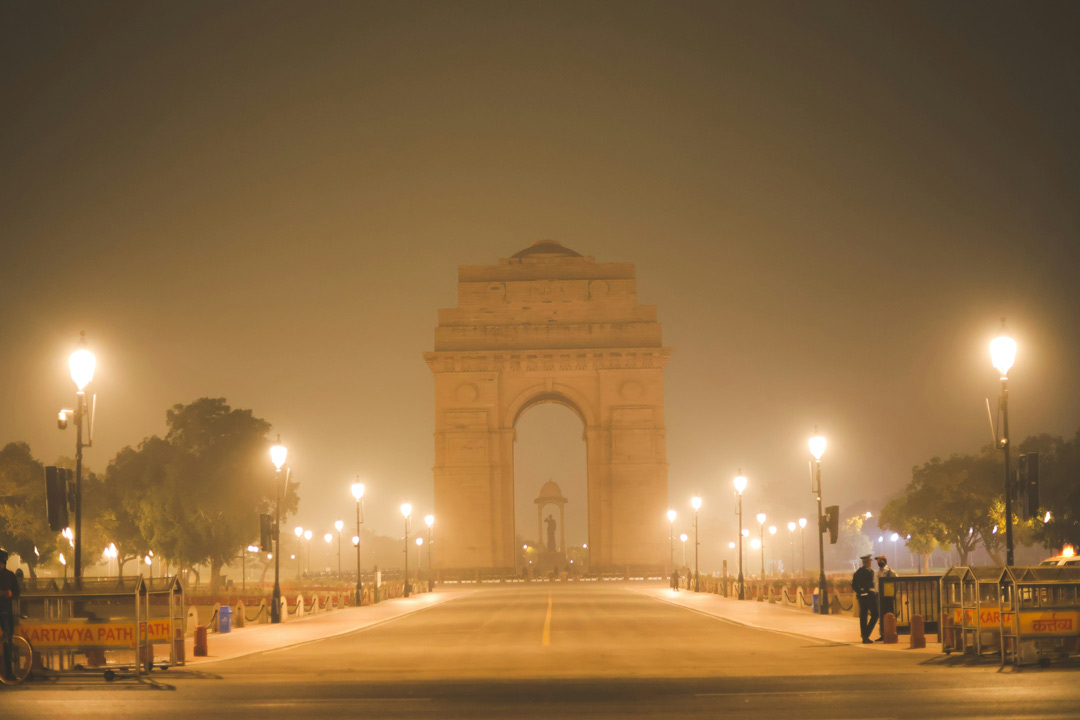
Dist: 347 km | Time: 7 to 8 hr | Altitude: 239 to 2270m
Tonight, your cab or Volvo bus will take you to Shimla, the queen of the hills. This journey is 347 km long and takes you via Kalka, Solan, and Shoghi. You will reach Shimla the following day.
Meals: Nil
Overnight: Journey by Volvo Bus or Cab

Dist: 220km | Time: 7 to 9 hr | Altitude: 2270m to 2630m
After Reaching Shimla, you will drive towards Sangla/Rakcham via Rampur and Karcham. Upon arrival at Sangla, you will check in to the homestay or hotel and gear up to explore Chitkul Village and the local market.
Meals: Dinner
Night: Stay at Homestay/Hotel in Sangla/Chitkul

Dist: 90km | Time: 7 to 10 hr | Altitude: 2630m to 3625m
Today, you will depart to Tabo as early as possible. On the way, you will stop at Nako, where you can rejuvenate by visiting Nako Monastery and Nako Lake and enjoying local food in the cafes. You will also visit the Gue Monastery (if possible). In the evening, you will arrive at Tabo.
Meals: Breakfast and Dinner
Night: Stay at Homestay in Tabo

Dist: 50km | Time: 7 to 10 hr | Altitude: 3280m to 3800m
After waking up to the view of deserted mountains in Tabo, you will visit Tabo Monastery, Dhankar Monastery, Pin Valley, and Lingti waterfall. After visiting all these places, you will continue towards Kaza, where you will stay for the night.
Meals: Breakfast and Dinner.
Night: Stay at Homestay in Kaza
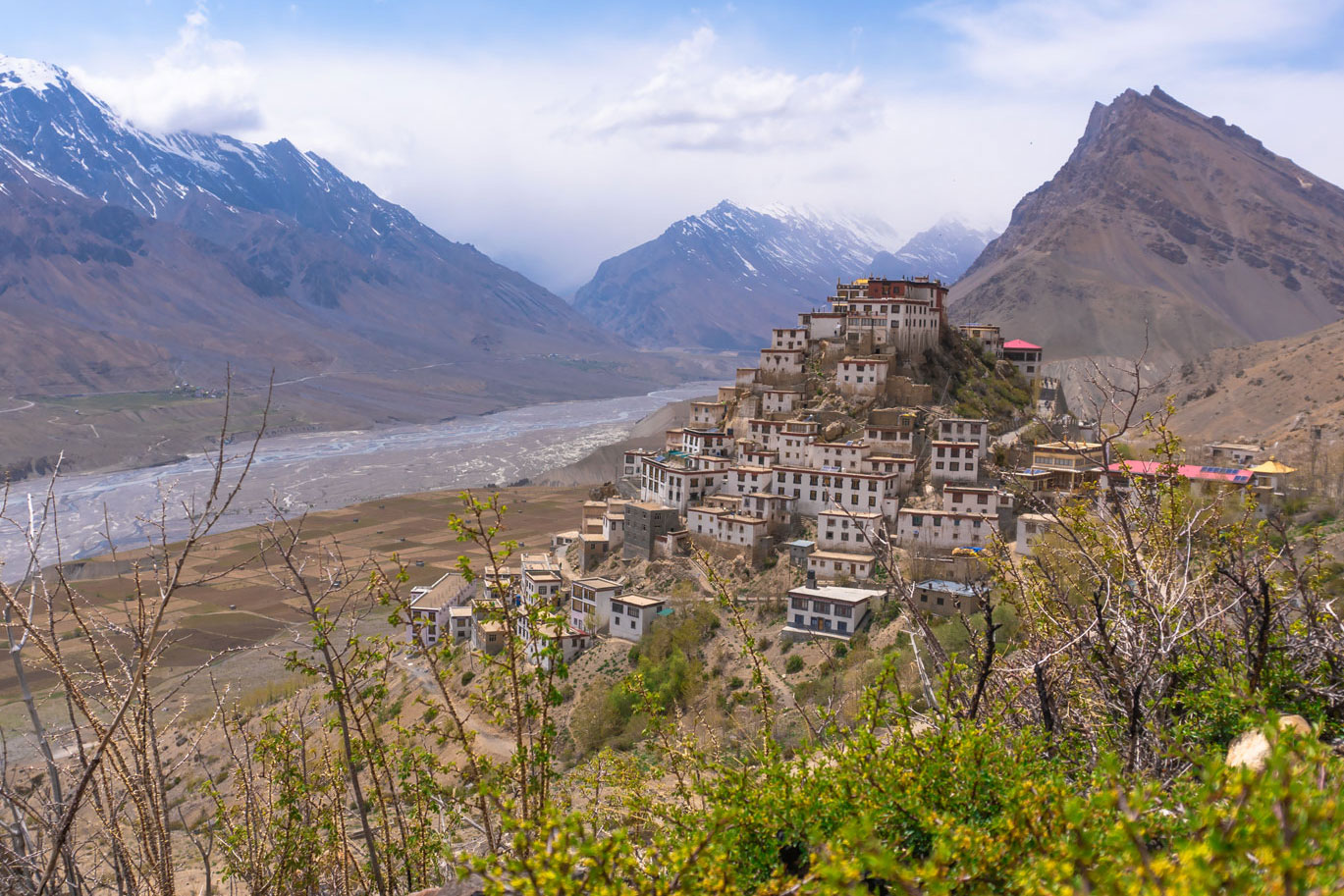
Dist: 50km | Time: 7 to 10 hr | Altitude: 3800m to 4590m
Today, you will wake up to a view of Spiti Valley. Later, you will visit Langza Village (famous for Buddha Statue), Komik Village (one of the high-altitude villages), and Hikkim (the highest Post office in the world). In the evening, you will return to Kaza.
Meals: Breakfast and Dinner
Night: Stay at Homestay in Kaza

Dist: 180km | Time: 7 to 10 hr | Altitude: 3280m to 3800m
Today, you will visit the famous Key Monastery and Chicham Bridge (Asia’s highest suspension bridge). Later, you will depart for Tabo, where you will visit Tabo Monastery, renowned for its ancient murals, sculptures, and artefacts.
Meals: Breakfast and Dinner
Night: Stay at Homestay in Tabo
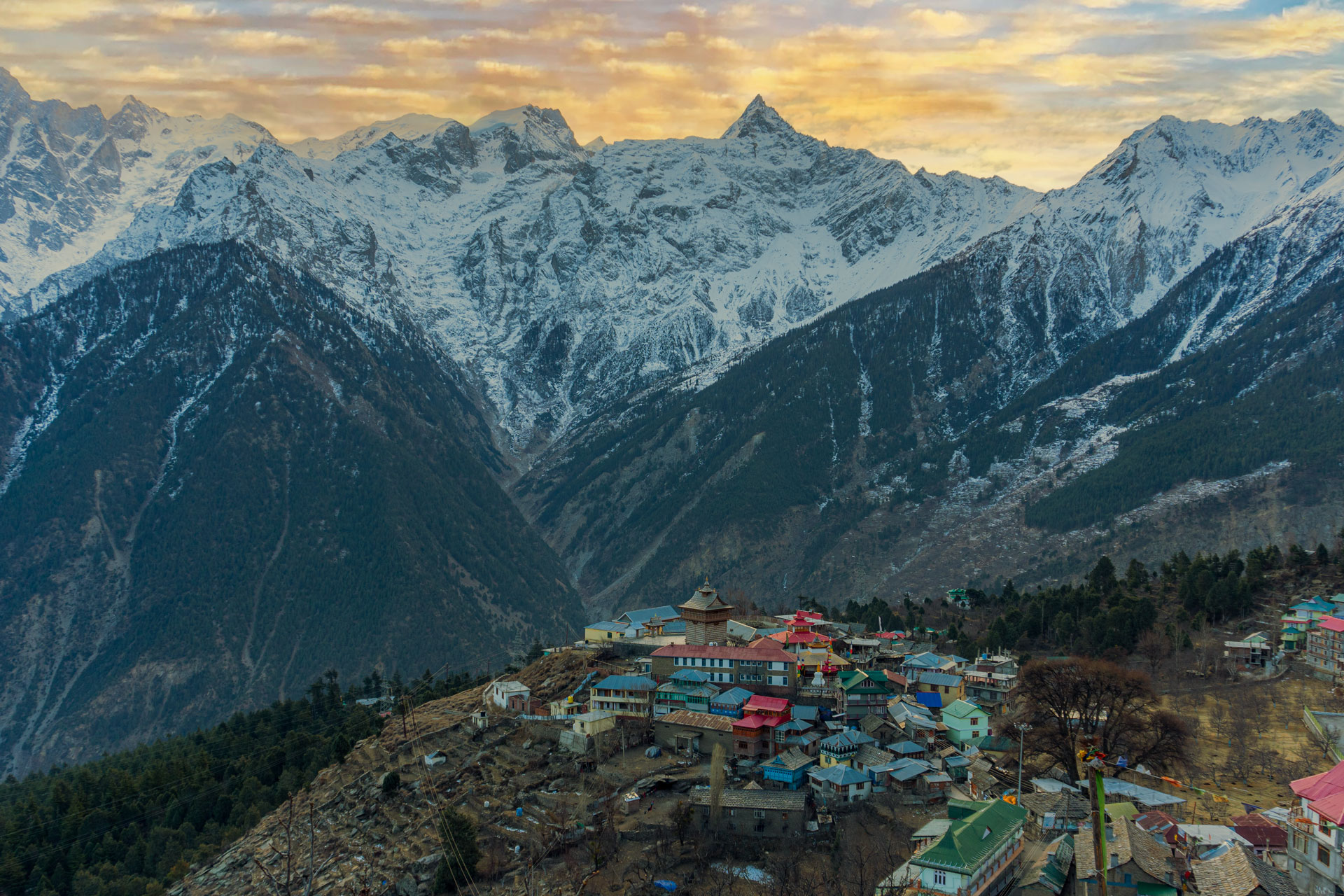
Dist: 160km | Time: 7 to 10 hr | Altitude: 3280m to 2960m
Today, after freshening up, you will leave for Kalpa, a small village above Reckong Peo facing the Kinner Kailash Ranges. After reaching Kalpa, you will check in to your hotel and visit the suicide point Cliff.
Meals: Breakfast and Dinner
Night: Stay at the Hotel in Kalpa
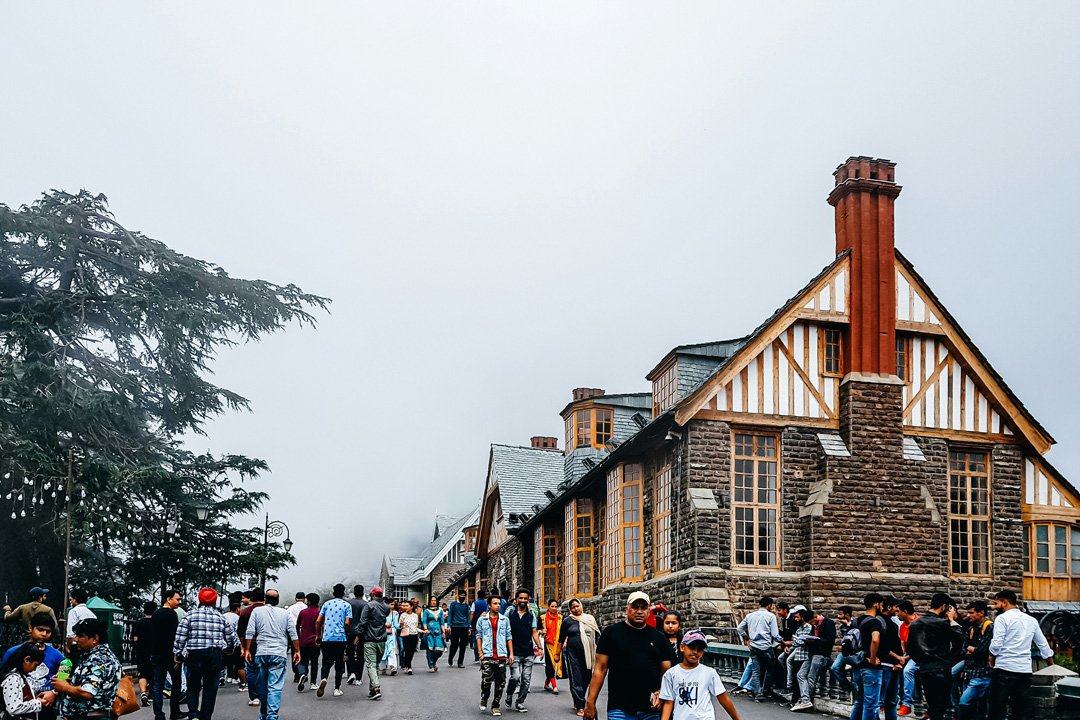
Dist: 225 km | Time: 7 to 10 hr | Altitude: 2960 m to 2276 m
Wake up with a view of Kalpa Valley. After having tea and breakfast, you will start driving back to Shimla. You will arrive in Shimla late in the evening, after which you can board your bus to Delhi or continue in the cab towards Delhi.
Meals: Breakfast
Night: Journey by Volvo Bus or Cab
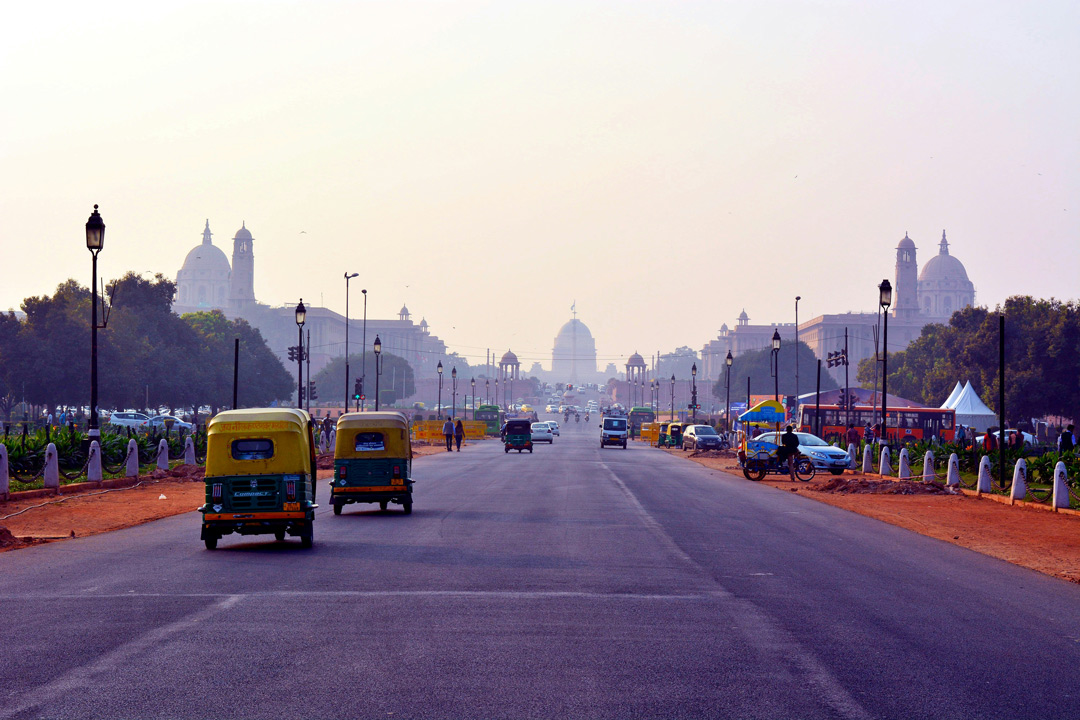
Dist: 324 km | Time: 7 to 10 hr | Altitude: 2270m to 239
You'll arrive in Delhi early in the morning, marking the end of your memorable journey through the Spiti Valley, with a heart full of cherished memories and a camera full of stunning photos.
Meals: NA
Night: NA
Altitude Sickness: Diamox or Portable Oxygen Cylinder
Cold and Flu: Paracetamol (Tylenol), Cetirizine, Loratadine, Cough Syrup/Lozenges, Vicks Vapourub.
Pain and Inflammation: Ibuprofen, Muscle relaxants, Pain refllief Spray.
Gastro: Antacids, ORS, Loperamide.
Other Medications: Anti-nausea Medication, Antibiotics, Personal Prescription Medicines.
Note: The medication is just for reference. Kindly contact your doctor before purchasing any of the given medicines.
| Location | Places to visit |
| Sangla/Chitkul | Baspa River, Sangla Valley, Karcham and Chitkul |
| Kalpa | Reckong Peo, Suicide Point. |
| Tabo | Nako Lake, Tabo Monastery |
| Pin Valley | Dhankar Fort, Dhankar Lake, Pin Valley, Gue Monastery |
| Kaza | Komic Monastery, Hikkim, Langza Village and Key Monastery |
Notes:
We understand that plans can change, but the booking amount is non-refundable due to the costs we incur in preparing for your tour or activity. If you wish to reschedule for a different date, we'll adjust it to the same package, providing you with the necessary flexibility. If you have paid the total amount but cancelled the package. You will be provided with a refund, as mentioned below:
Tours or activities may be cancelled due to unforeseen events beyond our control, weather conditions such as heavy rain or storms, or government restrictions like sudden closures of specific areas. In such a scenario, we will provide an alternate tour or activity. However, no refunds will be provided.
About Winter Spiti 4×4 Expedition
Spiti Valley, a cold desert nestled in the Himalayas of northern India, is a unique blend of cultural and natural landscapes. Its breathtaking beauty, ancient monasteries, and adventurous trekking trails make it a must-visit for any passionate traveller. One of the unique experiences Spiti Valley offers is the Winter Spiti 4×4 Expedition, conducted via 4×4 vehicles. This thrilling journey takes you through the rugged terrain, showcasing the valley’s stunning snow-covered landscapes, majestic mountains, and challenging trails. The expedition covers iconic spots like the Key Monastery, the Chicham Bridge (Asia’s highest), and the remote villages of Komic and Hikkim, all set against a winter wonderland of pristine snow. Participants experience the raw beauty of Spiti while navigating its demanding roads, with opportunities to engage with local culture, witness spectacular views, and experience the thrill of spotting elusive wildlife like the Snow Leopard. This journey offers excitement and serenity, making it a must-do for any passionate traveller.
Spiti (Winter Spiti 4×4 Expedition), also known as the cold desert of north India, is a place of spiritual and serene beauty. It has patches of green grass over the sand and stone-covered mountains, with small villages at distinct points. Spiti is also known as ‘The Middle Land’ because this valley is surrounded by mountains, which separated it from former empires like Ladakh from the North, Tiber from the East, Kullu to the West and Bushahr to the South. The region is influenced by Buddhism and houses most of the famous monasteries in the valley, creating a serene and spiritual atmosphere sure to calm the soul. Buddhism plays a significant role in the Spiti valley, which is proven by the piles of stones called ‘mani’ around the valley, white-washed stupas housing Buddhist relics, prayer flags fluttering around the valley, and the hymns of ‘Om Mani Padme Hum’. In his book ‘Kim’, Novelist Rudyard Kipling represents Spiti Valley as a world within a world, a place of the god. And you will find this very accurate if you visit this valley in the present day.
For centuries, Spiti Valley remained hidden from the world and was ruled by the local rulers called Nono. The valley’s history is marked by invasions from neighbouring kingdoms, including the warring princely states of Kullu and Ladakh. In 1841 AD, an army from Jammu and Kashmir led by generals Ghulam Khan and Rahim Khan invaded Spiti. A few years later, in 1846, a Sikh army also raided the valley. Finally, the East India Company took control of Spiti in 1846 after the demise of cis-Sutlej States. Despite these changes, the Nono ruled as the hereditary Wizier of Spiti, preserving the valley’s unique culture and traditions. The valley’s culture is deeply influenced by Buddhism, as seen in the white-washed stupas housing Buddhist relics, prayer flags fluttering around the valley, and the hymns of ‘Om Mani Padme Hum ‘.
Spiti has witnessed enormous tourism in the last two decades after staying hidden for a long time. The locals started renting their houses as homestays or constructing hotels on their lands to facilitate tourists visiting the area. Thanks to the beautiful moonscapes and scenic beauty of the Himalayan Mountains and Lakes overlooking the Spiti River, which attracts tourists worldwide. The glacial stream brings the people of Spiti an abundance of goodwill and hope for life. This surge in tourism is a testament to the growing popularity of Spiti Valley as a travel destination, making it a must-visit for any passionate traveller who wants to experience its unique beauty before it becomes too crowded.
During a full moon, the Spiti Valley looks like the moon itself has landed on the earth. Whoever witnesses this beauty with his eyes leaves soulful, never satisfied by its charm, even if he visits it repeatedly.
Language: The local people of the Spiti Valley are adaptable and can communicate in Stod Bhoti, a subgroup of the Tibetic languages spoken in Lahaul and Spiti. However, Hindi and English are more widely understood and spoken by almost everyone in the region, making communication more accessible for travellers.
Clothing essentials: Spiti remains cold throughout the year because of its high altitudes and sub-zero temperatures. The temperature during May and June barely touches between 15-20 degrees Celsius, but in the deep winter of December- February, it can fall as low as around minus 20 degrees Celsius in some places. The best time to visit Spiti is from April to October, but always wear warm clothes and layer on this journey because the temperatures can suddenly drop. After October, heavy woollen clothes are not just recommended but become essential as the evenings become cold.
Essential places During the Winter Spiti 4×4 Expedition
Tabo: A small and secluded village in the heart of Spiti, Tabo is famous for its monastery over a thousand years old. Founded in 996 AD, Tabo is the largest monastic complex in Spiti, comprising nine temples, 23 chortens, a monk chamber and a nun’s chamber. The village, with sprawling apple orchards, is in the middle of a cold desert. Across the monastery, on a mountain, is a cluster of caves that are said to have been used by meditating monks for months of solitary confinement. The monastery has terrific galleries of wall paintings and stucco statues. There is also a recently added new chamber where most daily chanting and prayers are held.
Dhankar: Between Tabo and Kaza, on a 7 km branching road from the village of Schichling, Dhankar monastery dramatically hangs on a cliff side on the left bank side of the Spiti River. In the local language, Dhankar means a fort, and the monastery was used to guard the valley from outside invasions. Because of its strategic location, the monastery served as a castle for the Nono (The local ruler). The whole complex speaks much about the building and engineering skills of the Spitians. Dhankar Monastery, at an altitude of 3370 m, is a repository of Buddhist scriptures in Bhoti script. It also serves as a base for excursions to Dhankar Lake and Pin Valley.
Kaza: The administrative headquarters of Spiti, Kaza, is the largest settlement in the valley. Situated on the left bank of the Spiti River, the small town’s narrow streets lead to the marketplace, which has some restaurants. Kaza has a Bank, ATM, Post Office (the highest in the world), and a filling station (the highest petrol pump). It is a good base for exploring the region, and the famous Key monastery and remote villages, including Langza, Hikkim, and Komik, can be easily reached from here.
Kee Monastery/Ki Monastery/Kye Monastery: Perched on a volcanic-shaped hillock, Kee Monastery is a collection of faintly lit rooms and a maze of dark corridors leading to different complex sections. Age-old wood columns and small flights of stone steps surrender in front of heavily carved wooden doors leading to the prayer chambers, with exhibits of rare thangkas, murals, and several ancient musical instruments. A library contains manuscripts of sacred Tangyur texts. Apart from the cells occupied by the monks, the Gompa has a large assembly hall and chamber lined with religious paintings. The chamber of the incarnate abbot Zim-chung is the highest point of the complex. The monastery is only 12 km from Kaza.
Kibber: Only 6 km from Kee village, Kibber, at an altitude of 4205 meters, is one of the highest inhabited villages of the valley. It’s not just a village but a crucial part of the Kibber Sanctuary. It is a 1400-square-kilometre area dedicated to preserving the region’s unique wildlife, including ibex, blue sheep, and majestic snow leopards. In summer, a state-run bus service connects Kibber to Kaza, offering a journey through lush green fields and houses with unique facades set against the backdrop of lofty hills. Kibber also boasts a civil dispensary and a post office, making it a unique high-altitude village experience.
Pin Valley: From the confluence place of Pin River with Spiti River, at Atargoo, 10 km from Schichling village, a narrow road leads into the valley carved out by Pin. At its origin, the river is fed by the Kungri Glacier. The valley has several monasteries, including the Kungri monastery and others in Mud’s scenic village. Several challenging trekking routes depart from Pin Valley, which passes over the Pin Parvati Pass. One trail goes into Kullu valley, while another goes through Bhawa valley and leads into Kinnaur. The Pin Valley is a National park where over twenty species of rare animals and birds, including the endangered snow leopard, are sheltered. Other wildlife sighted in the sanctuary are the Ibex, Bharal, Red Fox, Marten, Weasel, Snow Leopard, Bearded Vulture, Chakor, Golden Eagle, Griffon and Himalayan Chough Weasel.
Chandra Taal: Chandra Taal, meaning ‘Lake of the Moon’, is a tranquil, deep blue crystal clear water body nestled high up in the valley, forming an alluring crescent shape. North of Kunzum Pass (4,590 m) – the gateway to Lahaul from Spiti – this legendary lake is a sight to behold. It’s a serene pastoral countryside where a carpet of meadow grass covers the slopes, and shepherds lead their flocks to graze in spring and summer. The 14 km-long jeepable road from the Manali-Kaza at Batal to the lake offers a scenic journey. Still, a more peaceful approach is a 2-hour level walk from Kunzum Pass. The lakesides, with their picturesque beauty, are perfect for summer camping, offering a quiet retreat from June to October. The lake is a haven for trekkers and campers seeking tranquillity.
Kungri Monastery: Guru Padmasambhava, credited with spreading Buddhism into Tibet, is said to have founded the Kungri Monastery sometime in the 14th century. It is one of the oldest residential monasteries of Spiti. Pilgrims, Scholars and Tourists who want to live a life of monks without disowning their religion come to stay here for months. The monastery houses a fascinating collection of ancient Buddhist relics and over 380 Thangka paintings. You must attend the traditional ‘Devil and Sword’ Dance the locals perform every year in July. This monastery is around 3 kilometres from the Gulling Village.
Langza: A village guarded by a colossal statue of Lord Buddha, Langza is a sight to behold. The statue gazes at the trans-Himalayan ranges, dominated by the snow-capped Chau Chau Kang Nilda peak. Langza is renowned for its ammonite fossils, clay pottery, and handcrafted carpets and shawls. The beauty of this village, with its awe-inspiring mud houses and snow-capped peaks, is truly inspiring. Trails breaking out from the town lead to scenic, high-altitude lakes around the village. A tarred road past the city gets to Komic – one of the highest villages at 4400 m to be connected by a motorable road. Hikkim, the highest habitation of the valley, can be reached from Komic.
How to Reach Spiti Valley for the Winter Spiti 4×4 Expedition
Air: Flights from New Delhi and Chandigarh operate to Bhuntar and Shimla airports, the nearest airports to the distant cold desert. Road transport has to cover the onward journey.
Rail: Chandigarh and Kalka are Spiti’s closest broad gauge train stations. Jogindernagar and Shimla are the nearest narrow-gauge train stops to reach this remote region. The journey must be carried out by road from any of these stations.
Road: From Manali to Kaza, there are regular buses from July to October and from Shimla via Kinnaur, there are regular buses from May to October. Sturdy vehicles used as off-roading taxis are recommended for a travel tour to Spiti from Manali or Shimla.
Things to do During the Winter Spiti 4×4 Expedition
Spiti, located at an altitude of 3000 metres, welcomes tourists to its picture-perfect suburbs, breathtaking landscapes, adventurous trekking trails, ancient monasteries and scenic lakes. The most exciting aspect of Spiti is its monasteries, which offer the utmost tranquillity and a glimpse of a living tradition that goes back several centuries. What makes them more fascinating are the colourful murals, vibrant thangkas (religious paintings) and the red-robed lamas silently murmuring the sacred chants of Buddha. Low-lit corners of the mud and wood fortresses perched on cliffs exude an air of spirituality. Apart from monasteries, remote villages and wildlife are other attractions of Spiti. Herds of Himalayan blue sheep grazing and hopping in the rocky terrain can be regularly spotted. The vast area around Kibber, the highest inhabited village in the valley, is also the Snow Leopard’s habitat, making Kibber the top spot for spotting the big cat in the wild.
Fests & Fairs
Dechhang: Dechhang is a community celebration and a moment of getting together. It is celebrated in deep winter, in December-January. Feasting and merry-making mark the occasion.
Lossar: A three-day fair, the dates of which are decided by the lamas according to the lunar calendar, is usually celebrated in February to mark the advent of the New Year. The prime attraction of the festival at the monasteries is a ritual chham dance performed by lamas in elaborate costumes and masks. Lossar commemorates the assassination of the cruel Tibetan king, Lang Darma, in the 9th century AD.
Ladarcha Fair: A traditional trade fair held every July/August in Kaza, where various goods are bartered and sold. Ladarcha is the most celebrated festival of Spiti. It was held at Kibber village, where traders from other parts of Tibet would gather to barter agricultural produce and merchandise. After the closure of the India-Tibet border, the venue was moved to Kaza, where it has become a colourful celebration alongside the trading conducted.
Dining in Spiti Valley
The platter is dominated by Tibetan cuisine, with the Spitian food being an exciting mix of nourishment and fresh flavour. Small eateries and restaurants offer both North Indian and Tibetan food. Green patches in the valley sway with barley, the most significant food source. The grain and roasted flour make local dishes like thuktal and shunali. Travellers should know that regional food items, including momos and thukpa, are prepared in Tibetan style. Spiti offers flavoured and aromatic teas such as butter tea, lemon, ginger, and honey tea for tea lovers.
Hospitals in Spiti Valley
Spiti has limited medical facilities, though the Community Health Centre at Kaza, the Primary Health Centre at Tabo, and the Civil Dispensary at Kibber serve the locals well.
Transport in Spiti Valley
Spiti is connected to the outside world only by road transport. Travellers can enter Spiti from two sides, one through Shimla and the other from Manali. State-run buses and private taxis can be booked from Shimla and Manali, and they take about 12 hours to reach Kaza, the valley’s sub-divisional headquarters. Indian citizens don’t require a permit to enter the valley. However, foreign tourists entering Spiti through the Shimla-Kinnaur route require inner-line permits as this route takes you very close to the Tibetan border. Permits can be obtained at the Inner Line Permit Office at Reckong Peo, Kinnaur.
The Spiti 4x4 Winter Expedition is renowned for its thrilling adventure and serene beauty. This unique journey takes you through challenging roads and rugged terrain in a 4x4 vehicle, making it an actual test of driving skill. The snow-covered landscape enhances the valley's magical allure, with the best time to visit from December to March. Participants can spot rare wildlife like the Himalayan red fox and snow leopard and experience the stunning monasteries amid snow, along with traditional festivals such as Losar and the Tibetan New Year.
The best months for a Spiti 4x4 Winter Expedition are December, January, February, and March. During this period, the valley is blanketed in heavy snow, creating a winter wonderland ideal for skiing, snowboarding, and spotting wildlife. However, roads may be closed due to snowfall, adding to the adventure.
Heavy snowfall is highly likely during the Spiti 4x4 Winter Expedition, which runs from December to March. The valley is blanketed in thick snow, potentially causing road and mountain pass closures. To prepare, dress in warm layers, use a heater cautiously, and consider joining a group of experts if you need more confidence driving in snowy conditions.
An 8-10 day tour is ideal for the Spiti 4x4 Winter Expedition. This duration allows you to explore some of the remotest regions of the valley, visit the iconic Key Monastery, cross Asia's highest bridge at Chicham, and experience the snow-clad landscapes thoroughly.
| Places & Routes | Mobile Phone Network |
| Shimla, Narkanda, Rampur, Sarahan and Tapri | BSNL / MTNL, Airtel, Reliance Jio, Vodafone |
| Karcham and Sangla Valley | BSNL / MTNL, Airtel, Reliance Jio |
| Rakcham and Chitkul | Only BSNL works; Airtel needs to be better. |
| Reckong Peo and Kalpa | BSNL / MTNL, Airtel, Reliance Jio, Vodafone |
| Nako | BSNL / MTNL |
| Chango and Sumdo (enter Spiti Valley) | No network zone; mostly |
| Gue Village, Hurling and before Tabo | No network zone; mostly |
| Tabo and Dhankar | BSNL / MTNL – Spotty outside villages |
| Pin Valley and Mudh Village | No network zone; mostly |
| Kibber, Langza and Komic | BSNL / MTNL – Spotty outside villages |
After the closure of Rohtang Pass and Kunzum Pass, Spiti Valley is cut off from the rest of the world for about six months. So, to enter the valley in winter, the only route available starts from Shimla, traverses Narkanda Rampur Nako Khab Tabo, and finally reaches Kaza.
Yes, alcohol is allowed in Spiti Valley. Himachal Pradesh permits the sale and consumption of alcohol, with the legal drinking age set at 18 years. As long as you are of legal age, you can consume alcohol in Spiti Valley without breaking any state laws.
For the Spiti 4x4 Winter Expedition, pack the following essentials:
Rucksack: Comfortable and durable backpack.
Hiking Shoes: Durable footwear for rugged terrains.
Quick-Dry Tees: At least three pairs.
Poncho: For water protection.
Quick-Dry Towel: For hygiene.
Sanitizer: Essential for cleanliness.
Sun Cap/Hat: To protect against sunburn.
Sunscreen SPF 50+: For skin protection.
Reusable Water Bottle: For hydration.
Personal Toiletries: In a ziplock bag.
First-Aid Kit/Medication: For minor injuries and health issues.
Sunglasses/Reading Glasses: For eye protection.
Charger & Power Bank: To keep devices powered.
Personal Documents & IDs: Essential for identification.
Track Pants: Lightweight and comfortable.
Woolen Socks & Gloves: For warmth.
Main Jacket & Hoodie: For layering and warmth.
Woollen Cap: To prevent cold.
Scarf/Balaclava: For face protection.
Moisturizer & Cold Cream: To apply on the skin.
Insect Repellent: To guard against insects.
Cash: For emergencies.
Thermals: For extra warmth.
Snacks/Dry Fruits/Energy Bars: For quick energy.
The best time to see snow during a 4x4 Winter Expedition in Spiti is from December to February. These months offer the most snow coverage and coldest temperatures, making them ideal for experiencing the winter landscape.
Yes, going on a Spiti 4x4 Winter Expedition is generally safe. The route from Dehli/Chandigarh to Kaza—via Shimla, Narkanda, Rampur Bushahr, Nako village, and Tabo—remains open most of the winter. However, it may be closed for a few weeks during heavy snowfall.
Yes, breathing problems can occur during the Spiti 4x4 Winter Expedition due to the high altitude of about 12,500 feet (3,800 meters) above sea level. At high altitudes, reduced oxygen levels can lead to altitude sickness, manifesting in symptoms like breathing difficulties, nausea, and dizziness.
Visiting Spiti Valley in winter is generally not advisable for people with asthma due to the high altitude of about 12,500 feet, which reduces oxygen levels and can worsen breathing difficulties. The valley is also remote, with the nearest medical centre being 8–12 hours away. If you decide to go, bring an inhaler and test any new equipment beforehand to manage potential breathing issues.
Spiti is called the "Middle Land" because it is situated between India and Tibet. The name derives from "Piti," meaning "the middle land." This cold desert valley is surrounded by mountain ranges that separate it from neighbouring regions like Ladakh, Tibet, Bushahr, and Kullu.
The Spiti River flows through Spiti Valley in Himachal Pradesh, starting from the base of the K-111 peak and merging with the Satluj River at Khab. Glaciers feed it, with numerous tributaries, including the Chiomo, Gyundi, and Pin on the right bank and the Thamar, Hanse, and Tabo on the left bank. The river supports local villages like Tabo and Kaza and is known for its rocky terrain and diverse wildlife.
During the Spiti 4x4 Winter Expedition, you can enjoy activities such as:
Off-Roading: Navigate the rugged, snow-covered terrain.
Exploring Monasteries: Visit iconic sites like Key Monastery.
Wildlife Spotting: Look for Himalayan red foxes, blue sheep, and possibly snow leopards.
Snow Adventure: Experience snow-covered landscapes and participate in winter trekking.
Skiing: Enjoy skiing in the snowy environment.
Cultural Festivals: Witness traditional celebrations like Losar.
Nako Lake freezes in winter, making it ideal for ice skating.
Yes, driving from Manali to Spiti Valley in winter is possible with a 4x4 SUV equipped with snow chains, high ground clearance, and the ability to drive in low gear. However, please note that the Manali route may be closed due to heavy snowfall on Kunzum Pass.
During the Spiti 4×4 Winter Expedition, accommodation includes hotel stays with breakfast and dinner in Kalpa/Rampur on a double/Tripple sharing basis and homestay options with breakfast, lunch, and dinner in Tabo, Chicham, and Kaza.
During the Spiti 4×4 Winter Expedition, you'll encounter extreme conditions, including temperatures dropping below -20°C, heavy snowfall blocking roads and passes, strong winds, high altitude that may cause altitude sickness, and potential power cuts with no mobile signals. Be prepared with layers of warm clothing, as roads can be snow-covered, and some passes might be closed.
For the Spiti 4×4 Winter Expedition, wear thermals, a winter jacket, sweaters, gloves, and a woollen cap to protect against extreme cold. Pack comfortable lowers, snow boots or trekking shoes, extra socks, and a warm hat. Bring sunglasses, sunscreen for skin protection, and a lightweight scarf for temple visits.
People undertake the Spiti 4×4 Winter Expedition to experience the remote and stunning beauty of Spiti Valley in its most challenging and serene winter form. The expedition offers a chance to witness dramatic landscapes, enjoy thrilling off-road adventures, and immerse in this high-altitude region's unique culture and lifestyle. The extreme conditions add to the adventure, providing a sense of accomplishment and a memorable, off-the-beaten-path experience.
The Spiti Valley 4×4 Expedition includes accommodation on a double/triple sharing basis, daily breakfast and dinner, sightseeing and excursions as per the itinerary, and required permits.
January is generally safe for a Spiti Valley winter expedition, but be prepared for extreme cold, limited daylight, and potential travel disruptions. Check local weather and road conditions before your trip, and consider hiring local guides familiar with winter travel for added safety.
Leave a review